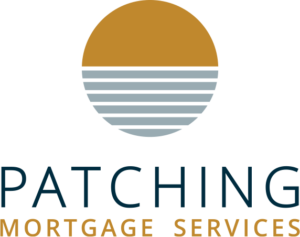Well I’m sure you’ve all seen the headlines – Governor Tiff Macklem and Bank of Canada (BoC) raised the overnight rate by 0.75% on September 7th, bringing it up to 3.25%. For those keeping score at home, that’s a total of a 3% increase on the overnight rate since March 2nd of this year. I know I’m starting to sound like a bit of a broken record in my messaging, but I’ll say it again – inflation is too high and the BoC’s only tool in their toolbox to reduce inflation to where they want it (2%-3%) is to increase the overnight rate, which impacts the Prime lending rate (now at 5.45% or 5.60% at TD).
Quick reminder
- How to calculate your Variable interest rate = Prime (5.45% or 5.60% at TD) – discount rate (found on your mortgage contract) = Current interest rate
- If you have a Fixed interest rate, your payment will not change until the end of your term.
When are Interest rates coming down?
Simply put, once inflation comes down, so will interest rates. The next inflation announcements are set for September 20th and October 19th.
What today’s press conference told us?
The BoC is determined to reduce inflation and judges that rates will need to rise further from where they are now to reign in inflation. By how much and when will be determined by how previous increases filter through the economy. If there is good news – which is hard to pull from where things sit – it’s that we’re likely not far from the end point of these rate hikes. The Canadian economy is beginning to slow. Headline inflation dipped in July. And since then, we’ve seen another 1.75% boost to rates that will only serve to put further downward pressure on growth and inflation. The bad news is much easier to find: core inflation is still on the rise which means that the BoC is not done yet. The effects of these rate increases take and the BoC doesn’t seem to be terribly scared of a recession.
Here are some key quote’s from today’s press conference from Canada senior deputy governor Carolyn Rogers:
- Central banks tend to worry when people and businesses expect inflation to remain high because it can lead to a self-fulfilling prophecy. Businesses that expect high inflation will set future prices higher while workers will negotiate future wage increases to match up with their expectations of inflation. We want to ensure this scenario does not materialize because if it does, the economic cost of restoring price stability will be much higher.
- Because we are in a period of excess demand, we need a period of slower growth to balance things out and bring demand back in line with supply.
- That the bank’s decisions now and in recent months will take up to two years to have their full effect on inflation
- We are determined to get this job done.
- Policy makers will be closely monitoring how consumption, global supply disruptions and inflation measures evolve as interest rates reach a level that starts to actively slow economic growth.
- Because we are in a period of excess demand, we need a period of lower growth to balance things out and bring demand back in line with supply
Let’s chat about Fixed rates
They haven’t changed for months, have been in the low to mid 5 percent range since April of this year, and increased far sooner than the variable interest rates did. To determine the future for fixed rates, we look to the bond yields, and as you can see from the graph linked to this email, there hasn’t been much movement and therefore, we can assume they will stay quite stable over the months to come (hopefully). Therefore, if you’re considering switching, you’ve got some time.
Let’s chat about variable rates
If you’re in an Adjustable Rate Mortgage (ARM), 2021 and the start of 2022 were great with most interest rates in the low to mid ones. Now not so much and you’ve likely experienced a big swing in your mortgage payment since March 2022. We’ve needed to adjust our budget’s and learnt that there’s an eb and flow to everything in life and right now we’re on the other side of where we were last year. Good thing you took my advice and set your payment to what it would have been if you chosen a fixed rate right?
If you’re in a Variable rate Mortgage (VRM), you’ve had the option to decide on whether you’d like to increase your payment during these rate increases to keep your amortization in line, put lump sums amounts towards your outstanding balance or keep your payment as is. That to be said, due to the rapid increase in the Prime rate, most VRM holders are experiencing something that we haven’t seen in over 20+ years and most Bank reps have never experienced. I’m referring to the Trigger rate and Trigger point. The Trigger rate is when your payment only covers the interest accrued on the loan and the Trigger point is when your loan exceeds 80% loan to value for conventional mortgages, or 105% loan to value for insured mortgages. The fear here is that your mortgage payment will not cover the interest accrued on the loan and your bank will add the difference to your outstanding balance. To some, this is fine as they’ve paid down their mortgage far enough that they will not likely hit their Trigger point, but for others, this is a real concern. Each person’s scenario is different and I’m here to support you in any way I can.
Real Talk on Your Options
We’ve all been analyzing the market, data and rates since the beginning of the year and trying to predict the Bank of Canada’s next move. But ultimately, the crystal ball is pretty murky so let’s have a frank conversation on what we can do:
Rate Perspectives
Arguing for Variable Rates: Prime is now at 5.45%/5.60% after yesterday’s increase. If we assume an average discount of ~0.75% over the past couple years, variable rate borrowers will now be paying ~4.7% on their mortgages. Fixed rate mortgages by comparison are ~5.34% for those that want to convert. So variable rates are still coming in at a discount. And with each successive rate hike, the likelihood of a recession increases. And a recession could potentially force rates down in the coming years. It’s also important to note that fixed rates have edged downwards since July’s rate hike and there’s little to no upward pressure on them especially after yesterdays news. In conclusion, missing out on today’s fixed rates is not an immediately pressing concern.
Argument for Converting to Fixed: The BoC has judged that rates still need to rise further to beat down inflation. And the issue here is that many inflationary factors are outside of their control. And so, Governor Macklem may decide to hold rates at current or higher levels until inflation comes back into target range. And that could be a year or more down the road. Moving to a fixed rate will take you off the variable roller coaster and give you some fixed payment certainty for set period of time. Though if rates do drop off in the coming years, it could be expensive to break out of the fixed rates of today.
Argument for Refinancing: The cost of everything seems to have risen and many borrowers will have accumulated some debts to cover these costs. There’s a very good chance if you’re a homeowner that put more than 20% down, you have some equity available to help. A refinance can re-set your amortization, and you can roll in some debt payments to reduce your overall budget. There are currently 1 year fixed rates at ~4.69% or less that may appeal to some borrowers.
Where the Bank of Canada goes from here?
The Bank made it clear that there are more rate hikes forthcoming, and markets currently expect another 50-bps hike at the Bank’s October 26 meeting.
- $200,000 mortgage – $78/month increase in payment
- $400,000 mortgage – $156/month increase in payment
- $600,000 mortgage – $234/month increase in payment
I’m staying in my Variable interest rate of Prime – .95% at Scotiabank, but I will watching closely for 1 to 2 year fixed interest rates that may be a suitable fit as I assume the Prime rate will go up another .25% – .50%.


